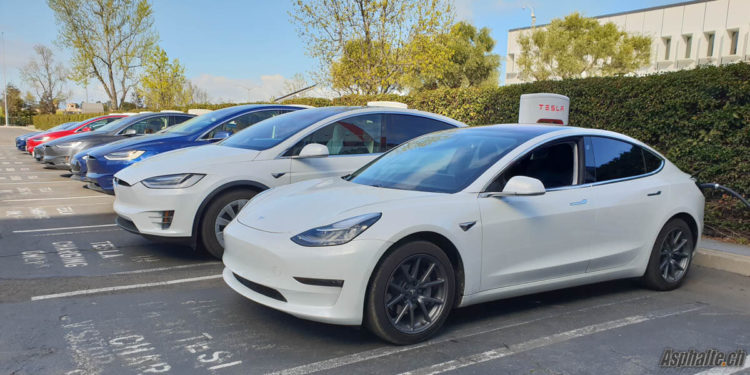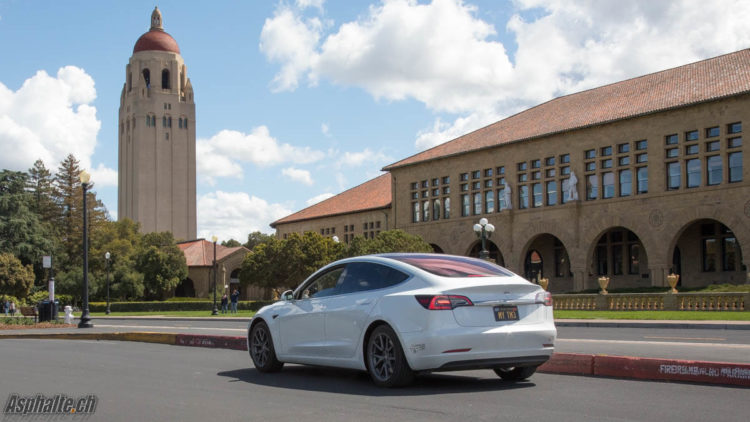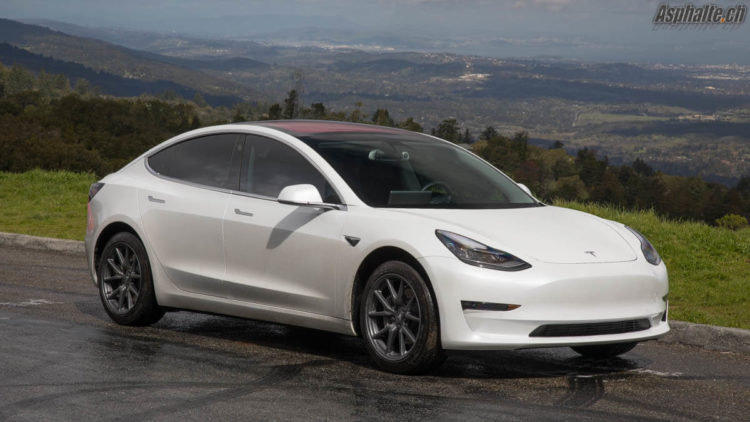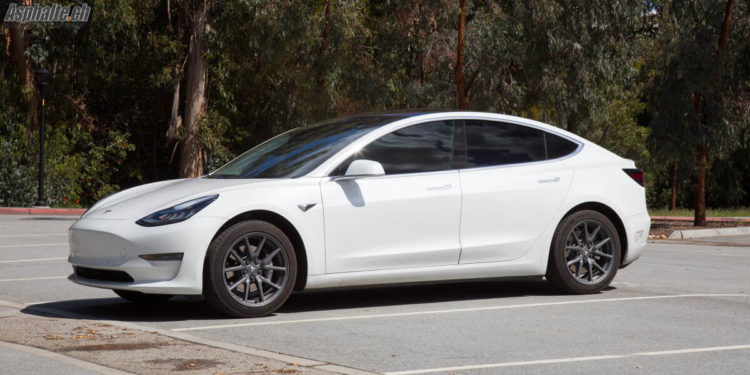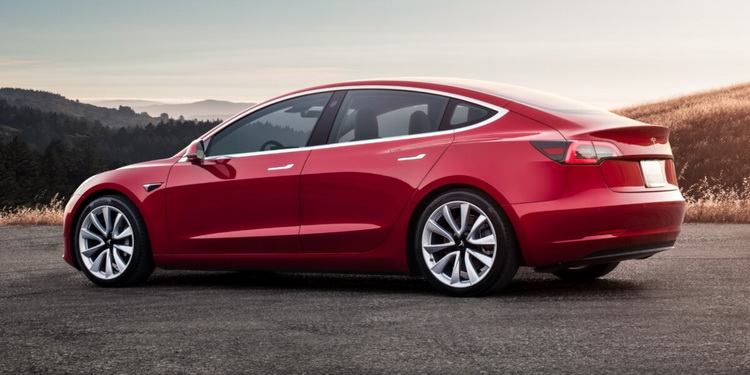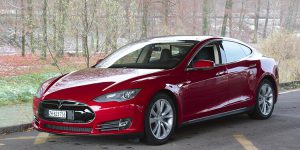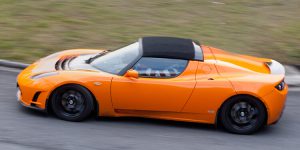Road Test Tesla Model 3
The car reported an average of 241 Wh/mi, or 149 Wh/km, which is remarkably low and difficult to explain. Engine breaking can be adjusted on two levels and regenerative braking allows to nearly never use the brake pedal and maximize kinetic energy recovery.
We had the opportunity to test Autopilot and its Autosteer function (deemed a beta feature). This systems remains one – if not the best lane guiding assistant on the market. The camera-based system does a remarkable job of following road markings when present. While not designed to be used outside of freeways, it allows to do so anyway, and the intervals between “hands back on the wheel” warnings are ambitiously spaced out.
I was however surprised that it is not integrated with navigation functions, ignoring freeway bypasses otherwise indicated by the satnav system. Tesla does not seem to regulate speed based on satnav data, when approaching curves for instance, relying solely on speed limits. This systems remains an adaptive cruise control with a permissive lane guiding feature.
The Tesla Model 3 does not escape the economic contingencies affecting electric cars. In order to offer a decent range, a large battery pack had to be integrated, and this inflates the price considerably, distancing the product from the 35’000$ claim. In addition, pricing of must-have options is heavy handed. This leads to the same outcome as with other electrics: an underwhelming interior, in stark contrast with the asking price.
The Tesla Model 3 is otherwise a pleasant car to drive, well sorted in its primary function. Its major shortcoming, its suspension setting, will require another road test to confirm the effectiveness of the fix.

